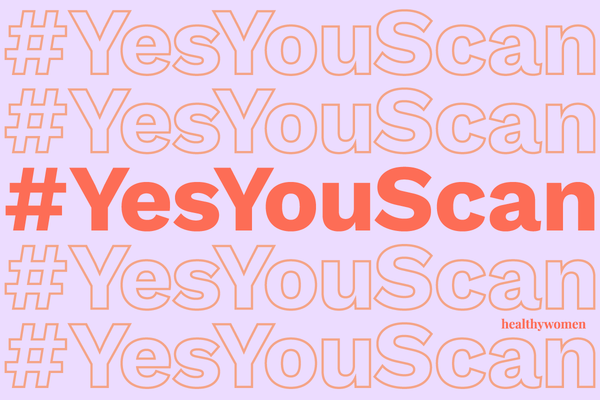Spotting gray hairs on your head. Forgetting where you put the car keys. Waking up a bit earlier. These things all can be a part of life as we get older.
But what about your back. How much back pain is normal? Is it OK to be in pain or is something bigger going on? Yes, basic aches and pains are facts of life. So, a little spine pain is totally normal and common.
Still, back pain shouldn't be severe and significant. You shouldn't have sharp pain when you wake up and you can't recall doing anything out of the ordinary, says Roy Nissim, DC, a chiropractor who practices in Santa Monica, Calif.
If you did yardwork and you normally don't, it's normal to be a bit achy. But if you're in construction and you're in back pain (even after taking some over-the-counter medicines to help relieve pain and inflammation), something may be wrong. "We can wake up with aches and pains," says Dr. Nissim. "But a sharp and dull pain isn't normal. For most, if pain lingers for more than 48 hours, that's a red flag. A light bulb should go off that something's not right."
He also says you want to look out for pain that goes away and then returns feeling worse. That can be a red flag that something is going on.
Don't wait to visit a health care professional if you're in pain. "Don't let pain linger longer than a week," says Dr. Nissim. "If something is bothering you, seek help. It's easier to treat and resolve something that's new, fresh and acute rather than treat something that's chronic."
Why prevent falls
No one likes to fall. It's embarrassing and, as you get older, it's dangerous. If you prevent falls, you ward off most fractures and serious injuries. According to the National Council on Aging, falls are the leading cause of both fatal and nonfatal injuries for older Americans. In fact, 25 percent of Americans ages 65 and older fall at least once each year. What's worse, falling once doubles your chances of it happening again.
You can take some general measure to help prevent falls. Work on balancing exercises, says Dr. Nissim. For example, stand on one foot. Or sit and then stand without using your hands to help you up and down. Be aware of your surroundings. For example, sit a moment before you get out of bed. Then stand and get your balance before you walk. Women should avoid high-heeled shoes, which may make them prone to tripping, Dr. Nissim says.
Vertebral compression fractures
Vertebral compression fractures (VCFs) are the most common fracture in people with osteoporosis, affecting about 750,000 people annually, says the American Association of Neurological Surgeons. VCFs affect about one-quarter of postmenopausal women in the United States. The risk of this condition increases with age; about 40 percent of women age 80 and older are affected.
VCFs happen when the bony block or vertebral body in the spine collapses. That can lead to severe pain, deformity and height loss. These fractures happen more commonly in the middle portion of the spine.
Most of the time, VCFs happen without an injury or pain. It can be caused by something as insignificant as a sneeze. One of the first signs of a VCF is height loss. Do your adult children seem taller? Do you need to hem pants you've worn for years? Are you suddenly unable to reach a shelf? This may mean you've experienced VCF.
Risks if left untreated
A VCF is painful. Even when you don't feel it, says the National Osteoporosis Foundation, it can be serious. People who've had one VCF are at five times the risk of having a second one. Risk for death goes up to more than 50 percent a year after a vertebral fracture. Each broken vertebra raises the risk for another since it changes how weight is balanced on the spine. You'll experience pain in your back and chest since these muscles have to work hard to hold you upright. It gets harder to walk. You develop stomach troubles and difficulty breathing. If you do nothing, you may experience disability.
Treatment options
Current therapies for vertebral fractures include nonsurgical and surgical treatments. Nonsurgical management includes analgesia, bed rest, physiotherapy, and back bracing.
A balloon kyphoplasty (BKP)—a minimally invasive surgery that can stabilize a fracture or compressed vertebrae due to osteoporosis, cancer, or non-cancerous tumors—is another treatment option. It can reduce your back pain from a spinal fracture and restore vertebral height and proper spinal alignment. Other benefits include improved mobility, ability to perform daily tasks and better quality of life. During the surgery, balloons are used to elevate the fractured vertebrae to return them to the correct position. The balloon creates a cavity that is filled with a special cement to prevent collapse from happening again. Good candidates are people with severe pain, those too frail or old or whose bones are too weak for spinal surgery, or younger people who have osteoporosis caused by steroid treatment or a metabolic disorder.
Although the complication rate for BKP is low, as with most surgical procedures, serious adverse events, some of which can be fatal, can occur, including heart attack, cardiac arrest (heart stops beating), stroke, and embolism (blood, fat, or cement that migrates to the lungs or heart). Other risks include infection; leakage of bone cement into the muscle and tissue surrounding the spinal cord and nerve injury that can, in rare instances, cause paralysis; leakage of bone cement into the blood vessels resulting in damage to the blood vessels, lungs, and/or heart. Talk to a health care provider about both benefits and risks of this procedure. A prescription is required. Results may vary.
For more information about VCF, visit the National Osteoporosis Foundation.
This resource was created with support from Medtronic.







